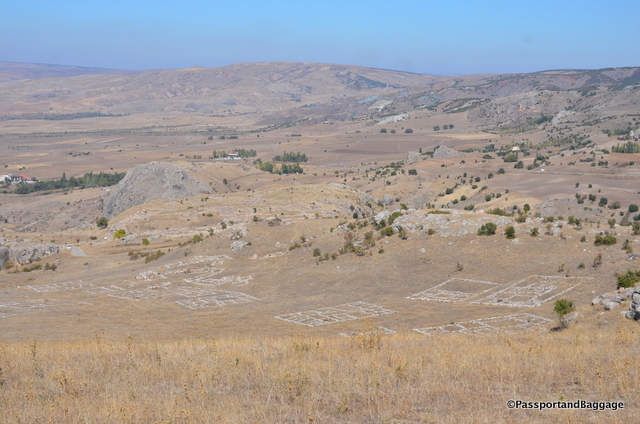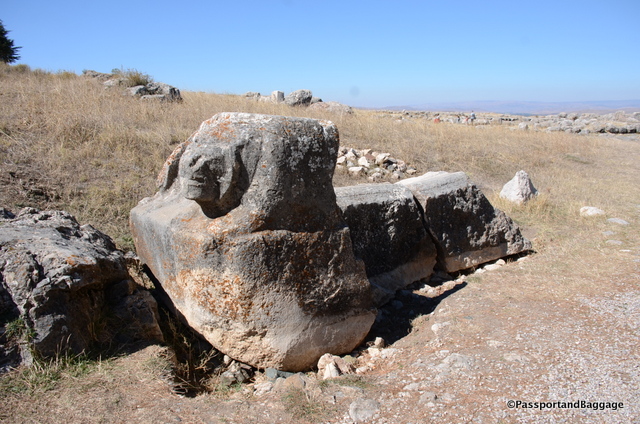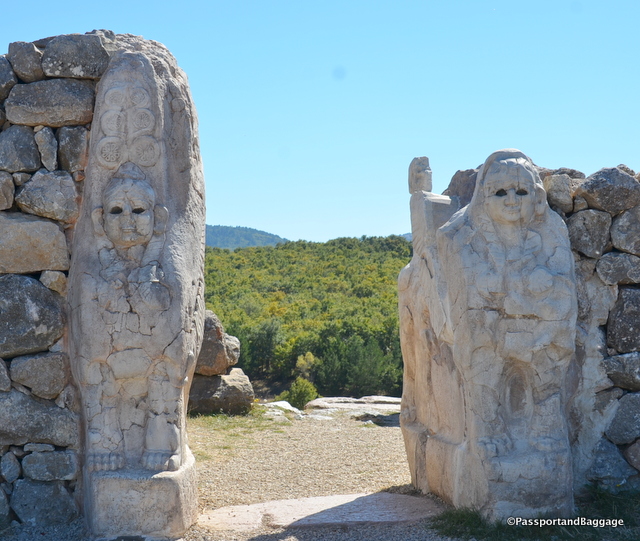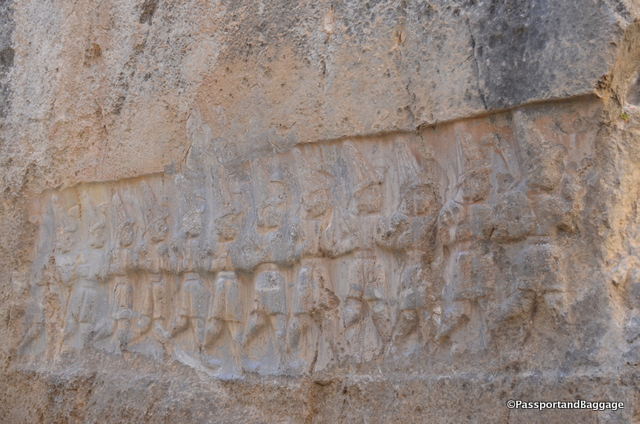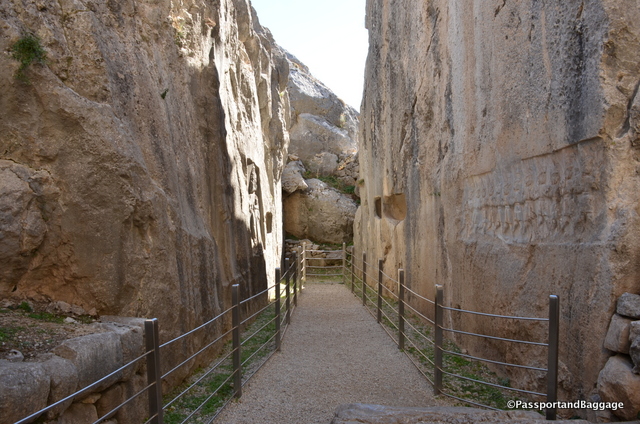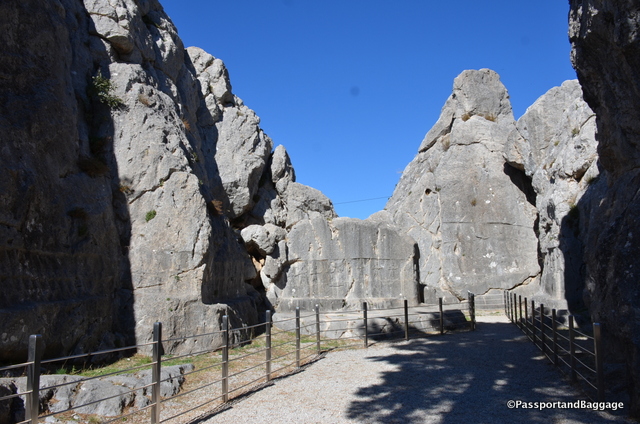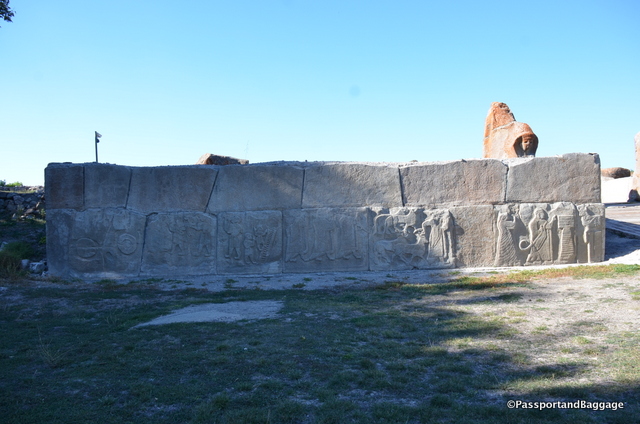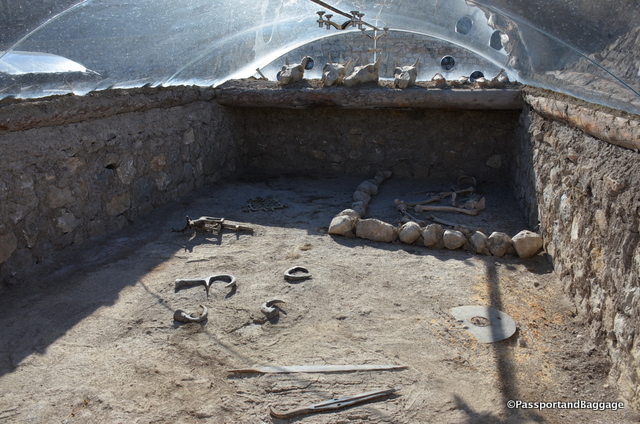October 1, 2016
The reason to drive nearly 200 miles across Central Anatolia is to visit the center of the Hittite civilization.
No one is certain about the origins of the Hittites, or for that matter, how they got to Anatolia, but it is clear they arrived sometime before the 2nd millennium BC. The Hittites were the first powerful empire to arise in Anatolia and its capital was Hattuşuş, now called Boğakale.
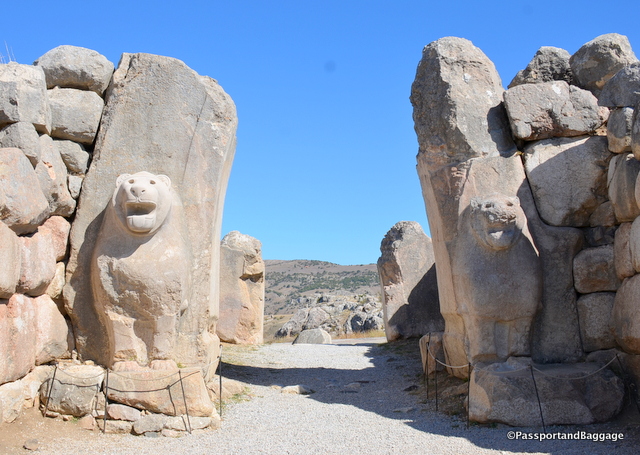
The Lion’s Gate was on the south-west wall of the city fortifications. It has two parabola shaped stones that once held a pair of wooden doors. The lions, like all of the gates at this site, have been removed to museums and these are reproductions.
The Hittite language was written in both cuneiform script and hieroglyphics and is though to be the oldest of the Indo-European languages, it was only deciphered in 1915.
The Hittites were an advanced civilization with knowledge of forging iron. This made them a powerful military force.
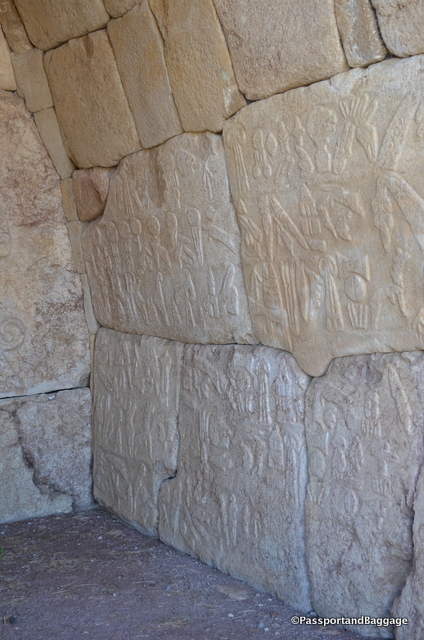
This is called Hieroglyphic Chamber #2. On the left side is the King as a warrior with a bow, spear and sword. On the back wall is an unnamed god in a long cloak with a winged sun disc above his head. He carries a sign similar to the Egyptian Ank, meaning life, in his hand. It the inscription you see in the photo above, on the right wall, the king reports various conquests.
Their cuneiform texts reveal a complex legal system and a fair treatment of criminals and prisoners.
King Anitta conquered a large part of central Anatolia and increased the kingdom. However, this also led to decentralization and the empire splintered into city states. It was reunited under King Huzziya. One of King Huzziya’s successors Labarna Hattushili I is considered to be the founder of the Old Hittite Empires. One of Huttushili I’s grandsons finally managed to conquer Babylon around 1530 with the empire reaching its peak around 1260 BC when Hattushili III and Ramses II (ruler of Egypt) signed an agreement of peace and friendship.
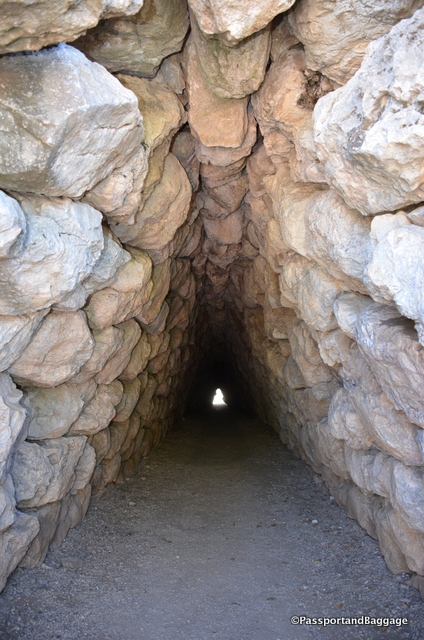
At the top of the city is this long tunnel of large boulders. It is an absolute feat of engineering.
It is thought that this treaty was signed after what might have been the largest chariot-battle ever fought. It is said that some 5000 chariots were involved in a battle between Ramses II and the soldiers of Hattusili II.
The treaty, written in both Egyptian hieroglyphics and in Akkadian, using cuneiform script, declares that both peoples and their gods want peace.

This is the Kings Gate. The approach to the gate from the outside was by way of a ramp that was protected by a separate outer wall and bastion.
It may be the world’s first known peace treat. In fact a copy hangs at the entrance to the Security Council chamber at United Nations headquarters, while the original is in the Istanbul Archeological Museum.
It is not known exactly what caused the fall of the Hittite Empire but written texts discuss famine and a rise of the power of Syria.
The next people to live in this area were the Phrygians from around 500 – 900 BC. The Phrygians fell to the Cimmerians in the 7th century BC until Alexander the Great conquered Anatolia in 330 BC.
Yazilikaya
Just up the road from Boğakale is a sacred spot of Hattusha. There are 2 temples with carved reliefs worked into the mountain.
In the first are rows of figures in relief, gods on one side and goddesses on the other. On the main façade is the meeting of the Tempest God and his wife the Sun Goddess plus their children. On another wall is King Tuthalia I.
 In the second temple are the Twelve Gods and the Sword King Nergal carved into the rocks. In this temple you will also find Sharruma, the Protector God.
In the second temple are the Twelve Gods and the Sword King Nergal carved into the rocks. In this temple you will also find Sharruma, the Protector God.
Alacahöyük
After a long drive through barren countryside you arrive at Alacahöyük. You enter through the Sphinx gate to a very large city. The items of note in this town are the “Alacahöyük Bronze Age King Graves”.
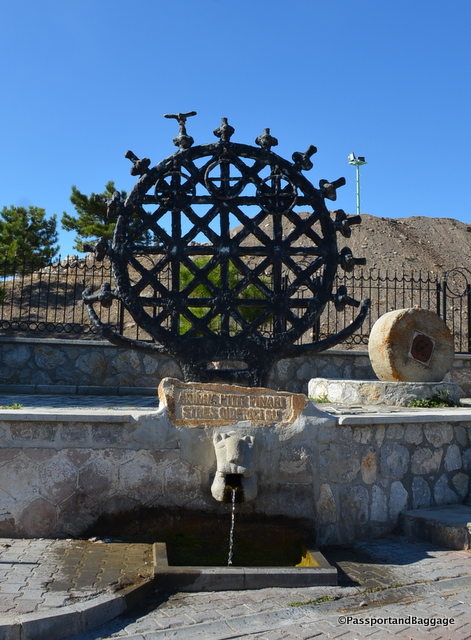
These sun disks are encircled with bullhorns, the sacred animal of the period and apparently they served a cultic function. They were found throughout the tombs
These thirteen “Royal Tombs” once contained the dead in the fetal position facing south. They were richly adorned with gold fibulae, diadems, and belt buckles and repoussé gold-leaf figures. The graves are deep rectangular burial structures, containing a floor of pebbles, walls of rubble masonry, and a roof constructed of wooden planks. The wooden planks were adorned with the heads and legs of sacrificed sheep. These wooden planks have since been replaced with plexiglass.
The museum at Alacahöyük is excellent. Many of the items found throughout these sites are at the museum in the town of Corem, we just ran out of time to visit it.
Here is a video of Boğakale to give you an idea of its vastness and its remotness.
